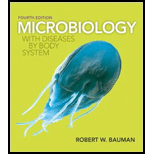
Microsporidiosis

Darius is sick, which is not surprising for an HIV-infected man. But he is sick in several new ways. Sick of having to stay within 20 feet of a toilet. Sick of the cramping, the gas, the pain, and the nausea. Sick with irregular but persistent, watery diarrhea. He is losing weight because food is passing through him undigested. Most days over the past seven months have been disgusting despite his use of over-the-counter remedies, which provide a few days of intermittent relief. His belief that these normal days signaled the end of the ordeal have kept him from the doctor. But now his eyes have begun to hurt, and his vision is blurry. Whatever it is, it’s attacking him at both ends. Time to get stronger drugs from his physician.
Microscopic examination of Darius’s stool sample reveals that he is being assaulted by Encephalitozoon intestinalis, a member of a group of opportunistic emerging pathogens called microsporidia. The single-celled pathogens are also seen on smears from Darius’s nose and eyes. Microsporidia were long thought to be simple single-celled animals, but genetic analysis and comparison with other organisms reveal that they are closer to zygomycete yeasts.
Microsporidia appear to infect humans who engage in unprotected sexual activity, consume contaminated food or drink, or swim in contaminated water. People with active T cells rarely have symptoms, but people with suppressed immunity become easy targets for the

Microsporidia attack by uncoiling a flexible, hollow filament that stabs a host cell and serves as a conduit for the microsporidium’s cytoplasm to invade. In this way, the pathogens become intracellular
Fortunately for Darius, an antimicrobial drug, albendazole, kills the parasite, and the effects of the infection are reversed. Unfortunately for Darius, the loss of helper T cells in AIDS means that another emerging, reemerging, or opportunistic infection is likely to follow.
- 1. Why are microsporidia considered to be opportunistic pathogens?
- 2. How could the discovery that microsporidia are fungi rather than animals improve treatment of microsporidiosis?
- 3. Microsporidia are intracellular pathogens. Which immune cells likely fight off the infection in people with a normal immune system?
Want to see the full answer?
Check out a sample textbook solution
Chapter 16 Solutions
Microbiology with Diseases by Body System (4th Edition)
- Describe the levels of structural hierarchy for the human body, starting with the organismal level and ending with the chemical level. In addition, you should make sure you link each level to the previous level, emphasizing the structural relationships.arrow_forward9 S es Read the section "Investigating Life: In (Extremely) Cold Blood." Then, drag and drop the terms on the left to complete the concept map. Red blood cells Genes Icefishes -have mutated have colorless Oxygen have few lack encode Blood Cellular respiration consists of- contain carries is a Platelets White blood cells carries low amounts of Hemoglobin is necessary for Plasma Protein Reset.arrow_forwardPlating 50 microliters of a sample diluted by a factor of 10-6 produced 91 colonies. What was the originalcell density (CFU/ml) in the sample?arrow_forward
- Every tutor here has got this wrong, don't copy off them.arrow_forwardSuppose that the population from question #1 (data is in table below) is experiencing inbreeding depression (F=.25) (and no longer experiencing natural selection). Calculate the new expected genotype frequencies (f) in this population after one round of inbreeding. Please round to 3 decimal places. Genotype Adh Adh Number of Flies 595 Adh Adh 310 Adhs Adhs 95 Total 1000 fladh Adh- flAdn Adh fAdhs Adharrow_forwardWhich of the following best describes why it is difficult to develop antiviral drugs? Explain why. A. antiviral drugs are very difficult to develop andhave no side effects B. viruses are difficult to target because they usethe host cell’s enzymes and ribosomes tometabolize and replicate C. viruses are too small to be targeted by drugs D. viral infections usually clear up on their ownwith no problemsarrow_forward
- This question has 3 parts (A, B, & C), and is under the subject of Nutrition. Thank you!arrow_forwardThey got this question wrong the 2 previous times I uploaded it here, please make sure it's correvct this time.arrow_forwardThis question has multiple parts (A, B & C), and under the subject of Nutrition. Thank you!arrow_forward
- Calculate the CFU/ml of a urine sample if 138 E. coli colonies were counted on a Nutrient Agar Plate when0.5 mls were plated on the NA plate from a 10-9 dilution tube. You must highlight and express your answerin scientific notatioarrow_forwardDon't copy off the other answer if there is anyarrow_forwardAnswerarrow_forward
- Lifetime Physical Fitness & WellnessHealth & NutritionISBN:9781337677509Author:HOEGERPublisher:Cengage
 Medical Terminology for Health Professions, Spira...Health & NutritionISBN:9781305634350Author:Ann Ehrlich, Carol L. Schroeder, Laura Ehrlich, Katrina A. SchroederPublisher:Cengage Learning
Medical Terminology for Health Professions, Spira...Health & NutritionISBN:9781305634350Author:Ann Ehrlich, Carol L. Schroeder, Laura Ehrlich, Katrina A. SchroederPublisher:Cengage Learning





